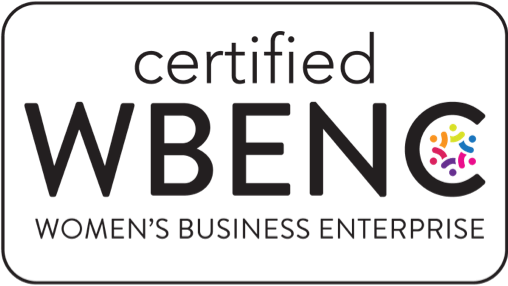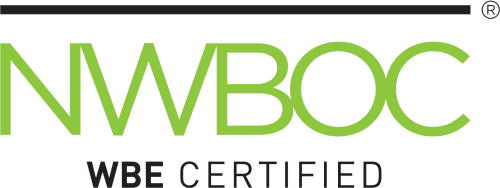Report
Government employees report high technology adoption, low enablement
These technology enablement strategies could unleash public sector productivity

Table of contents
Related services and insights
Technology enablementAs government faces pressure to become increasingly leaner and more productive, harnessing time-saving technology tools and automation is more valuable than ever. But according to Eagle Hill Consulting’s 2025 Government Technology Enablement Survey, despite widespread use of workplace technology among government employees, agencies are falling short of unlocking tech’s full potential.
Eagle Hill believes that by adopting a people-centric approach, agencies can more readily realize their technology investments. Seeking to understand agency priorities and employee needs early on in tech implementations helps reengineer surrounding processes and fully leverage technology. Not only does this strategy unlock efficiencies, it enables government employees to focus on mission critical tasks—both of which are essential for success as agencies strive to deliver more with fewer resources.
High public sector technology adoption, low enablement reported by government employees
Eagle Hill’s survey of U.S. government employees finds that the workforce sees the value of the technologies available to them in their workplace. Ninety-one percent of government employees say they use technology in their day-to-day work, and a whopping 84% say it makes their job easier. Agency employees are also eager to harness technology that can automate repetitive, low-value-add tasks and free up their time for higher-value activities. In fact, nearly three-quarters (74%) of respondents believe that the automation of repetitive tasks would improve their productivity.
Yet less than half (42%) report that automation has eliminated tedious aspects of their job in the last year. Employees are being met with friction: 44% of government employees say their organization is not prepared for increasing automation trends at large. What’s more, only 21% of employees report that their agency has made improvements to automate repetitive tasks in the last year.
Automation could be a game-changer in improving government agency productivity, streamlining operations, and enhancing employee morale, but agencies are leaving efficiency gains on the table by underutilizing opportunities to automate.
The government workplace technology gap: Potential versus on-the-ground impact
The data reveal a deeper issue: the fundamental misalignment between the intent of technology and its real-world execution. The introduction of new or improved technology is often mismatched with actual employee needs, and the intended benefits are not broadly realized.
According to the survey, when technology improvements are deployed, employees report the top benefits include helping government employees access information easier (40%), completing tasks more quickly (35%) and improving work quality (34%). But government employees are looking for more.
Forty-two percent reported still being burdened by manual data entry, 45% struggle to access information because it’s scattered across multiple systems, and 41% find it challenging to access those systems. In some cases, their agency’s introduction of new technology has made work harder: 17% of employees say new technology has made their job more difficult.
Government employees feel burdened and frustrated, despite technology’s intent to speed and ease work
Employees find it burdensome to:

Access different
systems

Enter or track
information into systems

Find information across
different systems
Source: 2025 Eagle Hill Consulting Government Technology Enablement Survey
Leaning into automation has the potential to resolve these friction points, but only if agencies can identify pain points and introduce the right tools to address them.
Public sector tech success requires more than tools—it requires process
Only 55% of government employees report that new technology rollouts are also accompanied by corresponding new processes. When technologies are deployed, they are often not supported with processes that are designed or engineered to drive successful implementation. The result? The promise of technology enabling smarter ways of working isn’t being actualized. For technology to deliver real results, agencies must map and reengineer the processes that surround it.
The yin and the yang of tech adoption among generations: both ends are out of sync
As government agencies determine what technology systems and tools the business and employees need, they should understand the differences in perception and adoption across their workforce that may impact implementation. Failure to do so poses a costly risk. Our research finds that across generations, government employees experience distinct pain points with workplace technology—and both ends of the generational spread are underserved during tech transitions.
Younger employees, often assumed to be “digital natives,” are struggling more than older peers with recent tech rollouts. Employees aged 18-34 are most likely to report that their jobs are more difficult as a result of new tech their agency has introduced in the last year (21%). When asked what’s driving their frustrations with workplace technology, younger employees are most likely to report insufficient training (38%) and gaps in guidance (29%).
On the other end, older government employees are least likely to report that workplace tech is benefiting key aspects of their day-to-day work. For employees aged 55 and above, just one third (33%) report that workplace technology has made it easier to access the information they need to do their jobs. Only 26% report that workplace technology has quickened the pace at which they get things done, and similarly just 26% report that it has improved the quality of their work. Like their early-career counterparts, employees aged 55+ cite lacking agency support. They are the most likely to report that their agency provides inadequate support during tech rollouts (30%) and they are the workforce segment least likely to see new processes rolled out in conjunction (30%).
This isn’t just a support gap—it’s a strategic, costly risk. Failing to account for government employees’ needs during digital transitions can erode not only productivity and morale, but also fuel resistance to change and adoption, slowing the return on technology investments. Smart agencies take the time to understand what makes adoption easier for each generation—and design enablement strategies that bring everyone along.
Key agency considerations as AI expands
Meanwhile, AI is rapidly advancing, but many agencies aren’t enabling their workforce to keep pace. According to Eagle Hill data, 65% of government employees aren’t using AI at work—but more than half of those non-users want to learn. Meanwhile, 44% of agency employees say their organization isn’t prepared for the rise of AI. This signals a growing disconnect between employee interest and organizational enablement. Government employees are eager to explore AI’s potential, but they aren’t equipped with the tools, training, or support to do so.
AI-supported search tools could transform how work gets done, but realizing that promise depends on more than the tech itself. It requires understanding the pain points employees face and matching them with AI solutions designed to relieve the load.
The remedy: Effective government technology enablement starts with an employee-centered strategy
Government employees are eager for new technologies, automation and even AI, but enthusiasm alone is not enough to take agencies to the next level of productivity. Without thoughtful implementation based on existing workflows and pain points, agencies risk missing the mark in improving both productivity and morale. To close the gap between promise and performance, governments must take bold, people-centered actions that align technology with real-world workflows.
Here’s how to get it right:
Read the full 2025 Workplace Technology Enablement Report
Methodology
These findings are based upon the Eagle Hill Consulting Government Technology Enablement Survey conducted by Ipsos in May 2025. The survey included 1,436 respondents from a random sample of employees across the U.S. plus an augment of 522 government employees. Respondents were polled about their views about working with technology.

